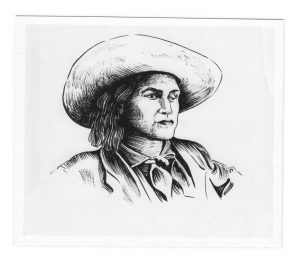New York Times article (December 5th, 2018)
Overlooked No More:
Charley Parkhurst, Gold Rush Legend With a Hidden Identity
By Tim Arango
A swashbuckling, one-eyed stagecoach driver lived her life disguised as a man. After her death, the revelation that she was a woman provoked widespread astonishment.

An illustration of Charley Parkhurst. She earned the nickname “One-Eyed Charley” after she was kicked in the eye by a horse, which was perhaps startled by a rattlesnake. Credit: Santa Cruz Museum of Art & History
Since 1851, obituaries in The New York Times have been dominated by white men. With Overlooked, we’re adding the stories of remarkable people whose deaths went unreported in The Times.
Charley Parkhurst was a legendary driver of six-horse stagecoaches during California’s Gold Rush — the “best whip in California,” by one account.
The job was treacherous and not for the faint of heart — pulling cargos of gold over tight mountain passes and open desert, at constant peril from rattlesnakes and desperadoes — but Parkhurst had the makeup for it: “short and stocky,” a whiskey drinker, cigar smoker and tobacco chewer who wore a black eyepatch after being kicked in the left eye by a horse.













Newest Book Review for The Whip
08-31-12: Karen Kondazian Cracks ‘The Whip’
Stages of Identity
There’s always some true story out there that’s stranger than fiction. The question facing a writer is whether or not to tell the story as fiction, or simply write a work of non-fiction. If you choose the latter, you can be limited by what we know of the subject; if that adds up to “not much,” then your book is going to end up being mostly conjecture. But if you choose to fictionalize a real-life “stranger than fiction” story, you run the risk of writing a novel less interesting than reality.
It’s a matter of balance with this sort of material and Karen Kondazian gets the balance right with ‘The Whip,’ a slim, smart western based on the story of Charlotte “Charley” Parkhurst. Here’s the backstory; Charley Parkhurst, brought up as an orphan, was a renowned stagecoach driver in California for Wells Fargo (called a “whip,” thus the title) who had runs from Watsonville to Santa Cruz and from San Francisco to Sacramento. When he died in 1879, it was revealed that he had been a woman living as a man for the last 30 years; moreover, evidence showed that Charlotte had at one time borne a child. A small dress was tucked away in a chest. That’s pretty much what we know.